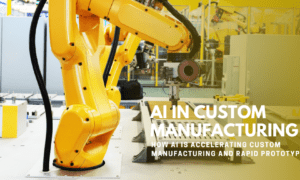Recent significant developments in artificial intelligence have caused serious concerns in various industries regarding their possibility to cheat. It is thought that, by using AI, bad actors can bypass the human part of what should be human-led, creating an uneven playing field where the honest are left behind. While this is and will continue to be a threat, what’s less reported on is the potential that AI holds for acting as a supporting force that helps us part of the way. This potential might not be as famed as the more outrageous applications of AI, but it could illustrate an important use of these new systems nonetheless.
AI as a Cheat
The AI ChatGPT is being held up as the most significant force for potential cheating in today’s AI landscape, with a track record that keeps improving. ChatGPT has passed medical board exams with acceptable marks, it’s overcome law school tests, and with the right prompting, it’s also proved useful in completing student writing assignments for them. Outside of chat systems, AI art programs like Midsommar have (controversially) won art competitions, and video tech isn’t too far behind.

“AI artwork” (CC BY 2.0) by sebilden
Addressing these problems can be difficult, thanks to how advanced AI has become. ChatGPT has released an AI detection tool that the developer believes will aid in weeding out cheating, but these developments operate in a cat-and-mouse game where perfection isn’t possible. In art, humans are often used to determine if a piece originated from human hands, but humans already struggle with this type of detection, so the next generation will become even more complicated.
Bridging the Gap
Aside from the obvious and indisputable issues, AI’s features make it an incredibly powerful tool not in doing the work for humans, but in pointing them on the right path. In systems like ChatGPT, this could be illustrated through the system’s ability to quickly summarise information from thousands of websites upon which students can refer, but not copy. With so many websites out there today delivering partial, incorrect, or misdirecting information, search engines can often waste an enormous amount of time. AI could mitigate this issue, allowing a search much closer to the original intent of what search engines would provide.
In other words, AI applications along these lines would be the type of tools they take the form of in many modern systems. Though we tend to overlook it, AI functionality is a huge part of a huge range of modern tech, and instead of hurting, it simply enhances. Simple spellchecks when writing might be considered cheating from one perspective, but to the rest of us, it’s an undeniably useful tool. The same could be said for predictive text on mobiles, which does some of the manual work for us, but still relays what we want.
The same applies to more mechanical implementations, as we see every day with modern technology. A scrubber dryer floor cleaning machine is a system that usually depends entirely on manual user input, but the more complex the machine, the more control becomes a challenge. To allow consistent control and quality across all levels, the bigger systems use smart technology to improve driving, keep in contact with GPS, and otherwise ensure enhanced performance.

“AI artwork” (CC BY 2.0) by sebilden
Like any technology, AI is not inherently good or bad, it’s just a matter of how it’s used. With the right applications, AI is just another shortcut to achieving the best possible result with the least amount of unnecessary human input. Though the most cutting-edge applications still have a teething period to go through, they’re too useful to ever be abandoned completely. To help us, but not take over for us, AI is here to stay, that is once the issues have been worked out.


































